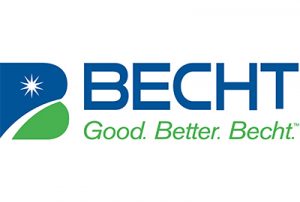
The new edition is scheduled to be issued December 2020. As usual, there are many clarifications, updated references to codes and standards, updates to basic allowable stresses and added listed materials to the 2018 Edition of ASME B31.3, Process Piping. Becht has members on the involved ASME B31 committees and we are committed to sharing updates and guidance with our clients. Below are some of the most significant changes:
Unlisted Valves (para. 307)
Permission to determine pressure-temperature ratings in accordance with the method set forth in ASME B16.34 was deleted.
Flexibility and Stress Intensification Factors (paras. 319 & 320)
The approach to calculating flexibility factors and stress intensification factors for branch connections was changed. There are definitions for in-plane, out-plane, and torsion moments on both the run and branch legs. Branch leg calculations use the appropriate branch flexibility and stress intensification factors and run leg calculations use the appropriate run factors.
Appendix D, Flexibility and Stress Intensification Factors, which provided methods for calculating these factors, was removed. The 2020 edition refers to ASME B31J, Stress Intensification Factors (i-Factors), Flexibility Factors (k-Factors), and Their Determination for Metallic Piping Components, for calculating the factors.
Impact Testing (paras. 323.2.2, 323.3.1)
For most carbon steels, impact testing during the welding procedure qualification was changed from being required for the weldment for design minimum temperatures below -29oC (-20oF). The new edition requires
- Impact testing of the weld metal for design minimum temperatures colder than -18oC (0oF), except that impact testing of the weld metal is not required when the filler metal specification requires impact testing at or colder than the design minimum temperature.
- Impact testing of the weld metal and the HAZ of a procedure qualification test coupon at or below the design minimum temperature.
Flange Attachment Welds (para. 328.5.2)
Changed illustrated weld details from “typical details” to “minimum weld dimensions” for double-welded slip-on flanges and socket welding flanges.
Heat Treatment (para. 330.1, 331.1)
Added permission to use the rules of ASME B31P, Standard Heat Treatments for Fabrication Processes, as an alternate to the rules is the Code for preheating and heat treatment.
High Pressure Fluid Service Pressure Design (para. K302.3.2)
The basis for allowable stresses was changed from 0.67 times yield strength to as much as 0.80 times yield strength. The allowable stress basis is now the same as ASME BPV Code, Section VIII, Division 3. The margin against burst at design pressure is 1.732, and the lowest margin against through thickness yielding during leak testing is 1.15.
High Pressure Fluid Service Fatigue Analysis (paras. K302.3, K304.8)
For fatigue analysis in previous editions, the Code permitted either a stress versus number of cycles (S/N) curve approach or a fracture mechanics approach. The Code now permits the S/N curve approach only if it can be shown that the piping component will fail in a leak-before-burst mode. Otherwise, the more rigorous fracture mechanics approach is required.
Don Frikken
December 2020
Share This:




 CDN NEWS |
CDN NEWS |  US NEWS
US NEWS 

























COMMENTARY: Fossil Fuels Show Staying Power as EU Clean Energy Output Dips – Maguire